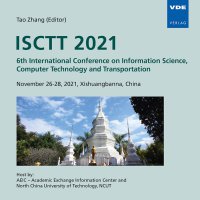Research on Bi-level Programming Models of Street Space Based on Two-dimensional Functions
Konferenz: ISCTT 2021 - 6th International Conference on Information Science, Computer Technology and Transportation
26.11.2021 - 28.11.2021 in Xishuangbanna, China
Tagungsband: ISCTT 2021
Seiten: 5Sprache: EnglischTyp: PDF
Persönliche VDE-Mitglieder erhalten auf diesen Artikel 10% Rabatt
Autoren:
Wang, Hang; Qi, Xianfeng; Cheng, Huan (China Academy of Civil Aviation Science and Technology, Beijing, China)
Ge, Jiacheng (MCC Capital Engineering & Research Incorporation Limited, Beijing, China)
Inhalt:
Traditional urban road planning and design methods unilaterally focus on street traffic needs while ignoring the needs of living space, which leads to unreasonable allocation of street space resources in practice. In the new era, the concept of street space layout has gradually transformed from efficiency-oriented mode to efficiency-dynamic mode. It is necessary to form this design concept into a scientific and operable mathematical analysis method. Optimal space travel utility and random user equilibrium are considered as the two objective functions for a premise of analyzing the travel demand of street travel subjects. A scientific two-dimensional street space allocation scheme is obtained by constructing a bi-level programming model based on two-dimensional traffic and spatial functions of street, and by analysing the interaction between street space allocation and travel traffic flow. The upper model takes the maximum travel utility satisfaction as the objective function to get the recommended value of street space configuration. Considering the impact of traffic flow changes on demand space, a stochastic user equilibrium model is constructed as the lower layer model by using cumulative prospect theory to predict and allocate residents' choice of travel mode. This method can provide a solution in the street design of urban airport economic zone.


